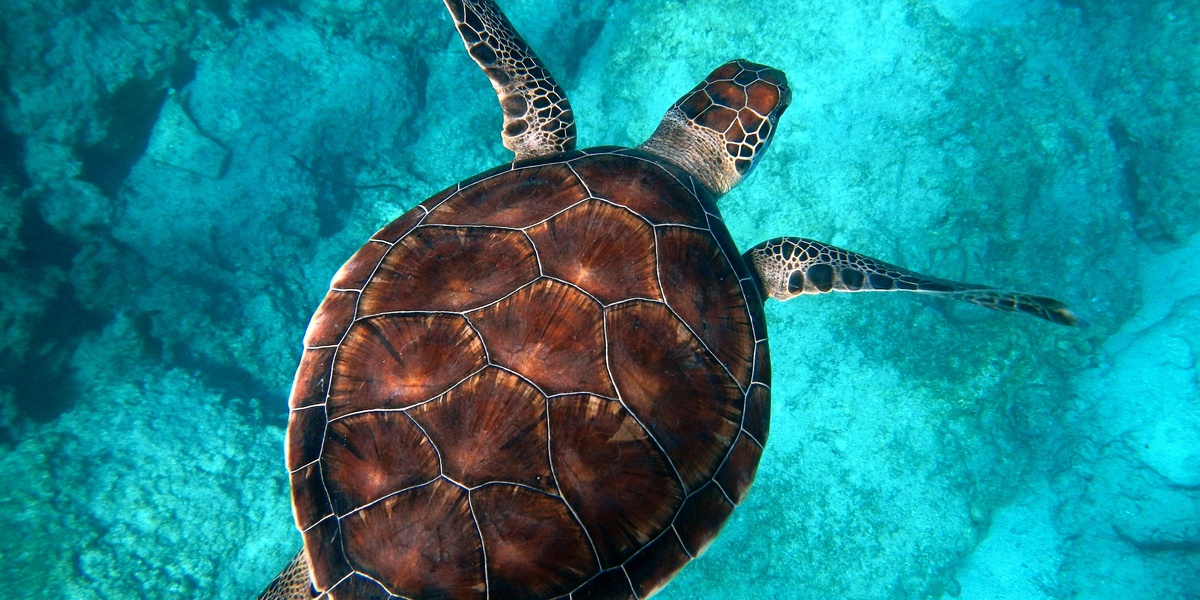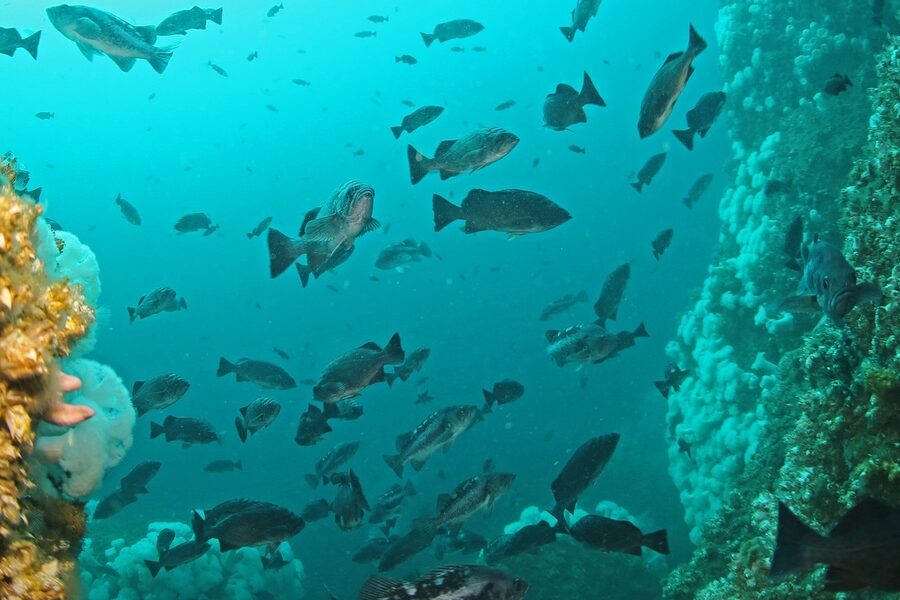Tuvalu’s chain of low coral atolls supports a mix of marine and shore species adapted to limited land and open ocean. Small islands, lagoons and reef flats mean many animals rely on coastal habitats, seasonal food pulses and reef structures for feeding and breeding.
There are 45 Animals of Tuvalu, ranging from Banded Coral Shrimp to Yellowfin Tuna. For each species you’ll find below the Scientific name, Habitat, Conservation status so you can quickly see where each lives and how at risk it is.
Which species in Tuvalu are most at risk?
Shorebirds that nest on the limited islets, some reef-dependent fishes and endemic invertebrates face the highest pressures from habitat loss, invasive predators and climate-driven sea-level rise; many species are also listed as data-deficient, so targeted surveys and IUCN listings are the best current guides to risk.
How can visitors and locals help protect Tuvalu’s wildlife?
Avoid disturbing nesting areas, reduce plastic and marine debris, use reef-safe sunscreen, follow local fishing regulations, and support community monitoring or restoration efforts—simple actions that reduce direct harm and improve the accuracy of conservation data you’ll find below.
Animals of Tuvalu
| Common name | Scientific name | Habitat | Conservation status |
|---|---|---|---|
| Green Sea Turtle | Chelonia mydas | Nesting on sandy beaches, foraging in lagoons and seagrass beds | Endangered |
| Hawksbill Sea Turtle | Eretmochelys imbricata | Coral reefs, lagoons, and nesting on sandy beaches | Critically Endangered |
| Spinner Dolphin | Stenella longirostris | Deep offshore waters, sometimes entering atoll passes | Least Concern |
| Polynesian Rat | Rattus exulans | Terrestrial, widespread across all islets in human-settled areas | Least Concern |
| Humpback Whale | Megaptera novaeangliae | Deep open ocean, migratory routes pass Tuvalu’s waters | Least Concern |
| Great Frigatebird | Fregata minor | Nests in trees on islets, soars over open ocean and lagoons | Least Concern |
| Brown Booby | Sula leucogaster | Nests on the ground or in low shrubs on remote islets | Least Concern |
| Red-footed Booby | Sula sula | Nests colonially in trees and shrubs on undisturbed islets | Least Concern |
| Black Noddy | Anous minutus | Nests in trees and shrubs, commonly seen in coastal areas | Least Concern |
| White Tern | Gygis alba | Coastal trees and man-made structures across all atolls | Least Concern |
| Sooty Tern | Onychoprion fuscatus | Nests in vast, dense colonies on the ground on remote islets | Least Concern |
| Pacific Golden Plover | Pluvialis fulva | Tidal flats, beaches, and open grassy areas during migration | Least Concern |
| Wandering Tattler | Tringa incana | Rocky shorelines, reef flats, and breakwaters | Least Concern |
| Bristle-thighed Curlew | Numenius tahitiensis | Open areas on islets, tidal flats, and beaches | Near Threatened |
| Long-tailed Cuckoo | Eudynamys taitensis | Wooded areas and coconut groves on various atolls | Least Concern |
| Mourning Gecko | Lepidodactylus lugubris | Widespread in vegetation, buildings, and coastal strand | Least Concern |
| Pacific Blue-tailed Skink | Emoia caeruleocauda | Terrestrial, common in leaf litter and undergrowth | Least Concern |
| Blacktip Reef Shark | Carcharhinus melanopterus | Shallow lagoons, coral reef flats, and drop-offs | Vulnerable |
| Whitetip Reef Shark | Triaenodon obesus | Coral reefs, often resting in caves or under ledges during the day | Vulnerable |
| Lemon Shark | Negaprion acutidens | Shallow lagoons, mangrove areas, and sandy flats | Endangered |
| Manta Ray | Mobula alfredi | Outer reefs, channels, and lagoons with cleaning stations | Vulnerable |
| Spotted Eagle Ray | Aetobatus ocellatus | Lagoons and seaward reefs, often near sandy bottoms | Vulnerable |
| Yellowfin Tuna | Thunnus albacares | Pelagic, open ocean waters surrounding the atolls | Least Concern |
| Skipjack Tuna | Katsuwonus pelamis | Pelagic, open ocean in large schools | Least Concern |
| Wahoo | Acanthocybium solandri | Open ocean, often near reef edges and drop-offs | Least Concern |
| Humphead Wrasse | Cheilinus undulatus | Outer coral reef slopes and drop-offs | Endangered |
| Giant Grouper | Epinephelus lanceolatus | Caves, wrecks, and deep lagoon channels | Vulnerable |
| Clown Triggerfish | Balistoides conspicillum | Clear seaward reefs with steep drop-offs | Least Concern |
| Titan Triggerfish | Balistoides viridescens | Lagoon and seaward reefs, often in sandy or rubble areas | Near Threatened |
| Orange-fin Anemonefish | Amphiprion chrysopterus | Sheltered in sea anemones on lagoon and outer reefs | Not Evaluated |
| Bicolor Parrotfish | Cetoscarus bicolor | Coral-rich areas of lagoons and seaward reefs | Least Concern |
| Powder Blue Surgeonfish | Acanthurus leucosternon | Clear lagoon and seaward reefs, often in schools | Least Concern |
| Moorish Idol | Zanclus cornutus | Lagoon and seaward reefs, from shallow flats to deep slopes | Least Concern |
| Giant Moray | Gymnothorax javanicus | Holes and crevices in coral reefs | Least Concern |
| Bluefin Trevally | Caranx melampygus | Reef drop-offs, channels, and deep lagoons | Least Concern |
| Red Lionfish | Pterois volitans | Lagoon and outer reefs, often hiding under ledges or in crevices | Least Concern |
| Coconut Crab | Birgus latro | Terrestrial, in coastal forests and vegetation on atolls | Vulnerable |
| Giant Clam | Tridacna gigas | Shallow, clear waters of coral reefs and lagoons | Vulnerable |
| Crown-of-thorns Starfish | Acanthaster planci | Coral reefs throughout the atolls | Least Concern |
| Black-lipped Pearl Oyster | Pinctada margaritifera | Attached to substrate in lagoons and reef slopes | Not Evaluated |
| Banded Coral Shrimp | Stenopus hispidus | Holes and crevices in the coral reef, often in pairs | Not Evaluated |
| Staghorn Coral | Acropora sp. | Shallow reef flats and upper reef slopes | Varies by species |
| Sea Cucumber (unspecified) | Holothuria sp. | Sandy bottoms and rubble areas in lagoons and reefs | Varies by species |
| Christmas Tree Worm | Spirobranchus giganteus | Embedded in the heads of massive corals like Porites | Not Evaluated |
| Ghost Crab | Ocypode ceratophthalma | Sandy beaches, active mostly at night | Not Evaluated |
Images and Descriptions
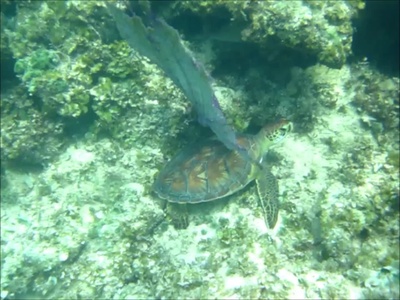
Green Sea Turtle
A large sea turtle named for its green-colored fat, not its shell. Often seen foraging on algae in Tuvalu’s lagoons, it is a key species for local conservation efforts as nesting sites are critically important.
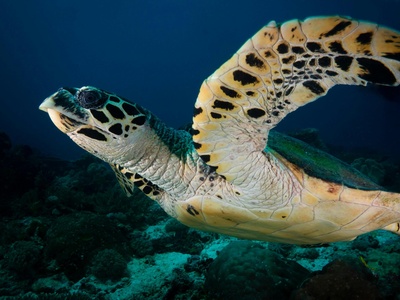
Hawksbill Sea Turtle
Identified by its narrow, pointed beak, this turtle feeds on sponges on the coral reef. Its beautiful shell once made it a target for poaching, and it remains one of the most endangered sea turtle species found in Tuvalu.
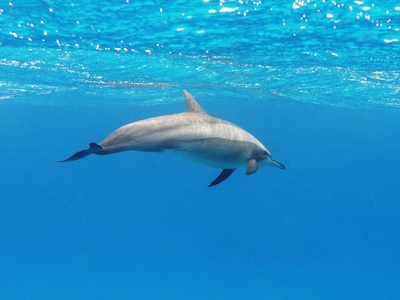
Spinner Dolphin
Famous for its acrobatic displays, leaping from the water and spinning multiple times in the air. They travel in large pods in the deep waters surrounding Tuvalu’s atolls and are a thrilling sight for boaters.

Polynesian Rat
An introduced species that arrived with early Polynesian settlers. Smaller than other rats, it is a major predator of native insects, bird eggs, and lizards, impacting the fragile atoll ecosystem.
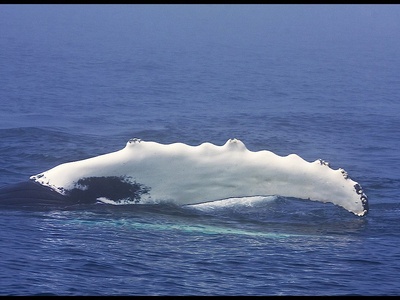
Humpback Whale
A seasonal visitor to Tuvalu’s waters during its migration between polar feeding grounds and tropical breeding areas. Known for its spectacular breaching behavior and complex songs, though sightings are not guaranteed.

Great Frigatebird
A large seabird with a huge wingspan. Males are famous for their inflatable, bright red gular pouch used in courtship. They are master aerial pirates, often stealing food from other birds mid-flight.
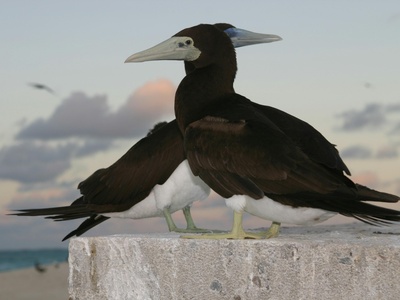
Brown Booby
A sleek seabird with a dark brown body and a contrasting white belly. They are spectacular plunge divers, hitting the water at high speed to catch fish and squid near the ocean surface.
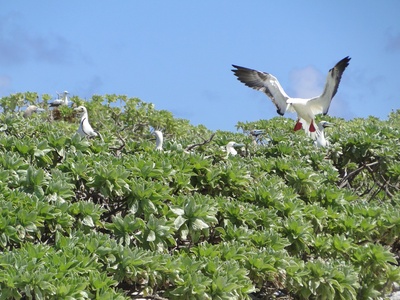
Red-footed Booby
The smallest booby, notable for its bright red feet. Unlike other boobies, it nests in trees. Funafuti Conservation Area is an important nesting site for this species, which forages far out at sea.

Black Noddy
A small, dark tern with a distinctive white cap. They are abundant in Tuvalu and often form large, noisy nesting colonies. They feed by dipping down to pick small fish from the ocean’s surface.
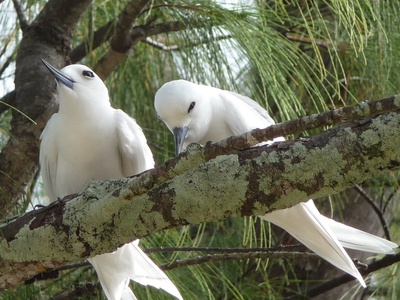
White Tern
A stunning, all-white seabird famous for laying its single egg directly on a bare tree branch, without a nest. It is a graceful and common sight, often seen flitting through coastal vegetation.

Sooty Tern
A highly abundant tropical seabird with a black back and white underside. They spend years at sea without landing, returning to islands like Funafuti only to breed in enormous, noisy colonies.

Pacific Golden Plover
A migratory visitor from its Arctic breeding grounds. This wading bird, known as ‘tuli’ locally, is a common sight probing for invertebrates on mudflats and shorelines during the non-breeding season.
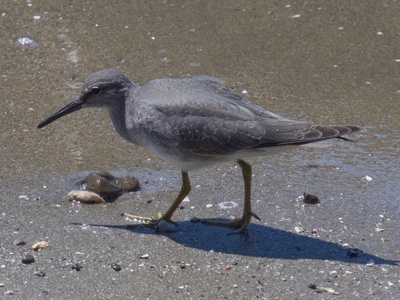
Wandering Tattler
A medium-sized shorebird that bobs its tail as it forages. It is a non-breeding migrant, recognized by its plain grey plumage and loud, ringing call as it flies along the coast.

Bristle-thighed Curlew
A large migratory shorebird with a long, decurved bill. It has one of the longest migrations, flying from Alaska to Pacific islands like Tuvalu. Its population is of conservation concern due to threats on its wintering grounds.
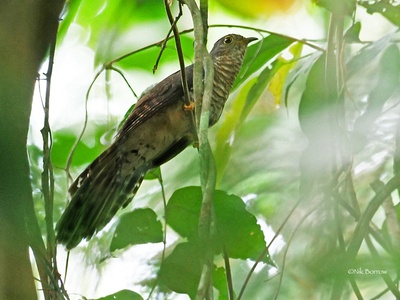
Long-tailed Cuckoo
A migratory land bird that breeds in New Zealand and spends the non-breeding season in the Pacific islands. It is a brood parasite, laying its eggs in the nests of other birds. It is more often heard than seen.

Mourning Gecko
A small, nocturnal gecko found throughout the tropics. This species is parthenogenetic, meaning the all-female population reproduces without males. They are commonly seen on walls and trees at night, hunting for insects.

Pacific Blue-tailed Skink
A common, sun-loving lizard easily recognized by its vibrant, electric-blue tail, especially in juveniles. It is very active during the day, scurrying through vegetation and gardens hunting for small insects.
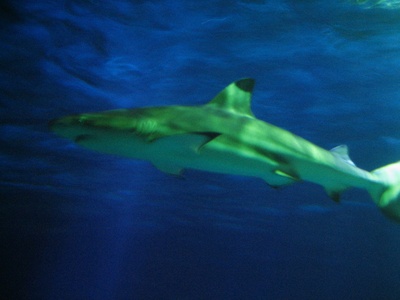
Blacktip Reef Shark
Easily identified by the prominent black tips on its fins. This timid shark is one of the most common sights in Tuvalu’s shallow lagoons, often seen patrolling the reef edges in search of small fish.
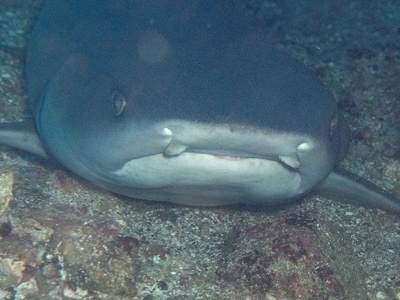
Whitetip Reef Shark
A slender shark with white tips on its dorsal and tail fins. It is a nocturnal hunter, adept at wriggling into reef crevices to catch sleeping fish, octopus, and crustaceans. Often seen resting on the lagoon floor.
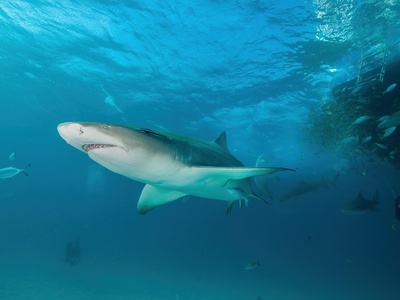
Lemon Shark
A stocky, yellowish-brown shark that is well-camouflaged against sandy seafloors. The lagoons of Tuvalu serve as important nursery habitats for juveniles of this species, which faces threats from habitat degradation.

Manta Ray
A majestic and intelligent ray, famous for its large size and graceful ‘flying’ motion. They visit specific reef locations known as ‘cleaning stations’ where small fish remove parasites from their skin.
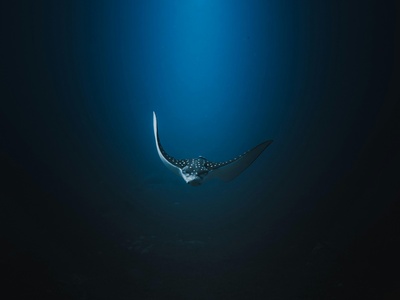
Spotted Eagle Ray
A beautiful ray with a dark back covered in white spots. Often seen ‘flying’ in small groups through the water column, they use their flattened snouts to dig in the sand for clams and crabs.
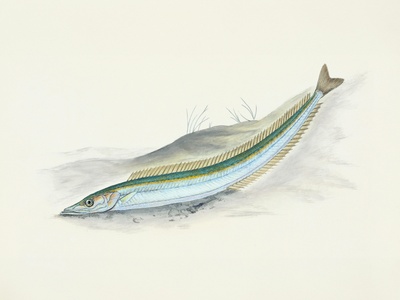
Yellowfin Tuna
A large, powerful, and commercially important fish. Known for the yellow finlets on its back, it is a prized catch for both local subsistence and international fishing fleets operating in Tuvalu’s Exclusive Economic Zone.
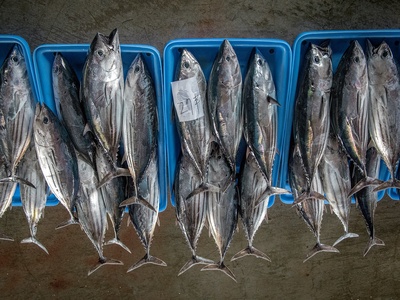
Skipjack Tuna
The most commonly caught tuna in Tuvalu, forming a cornerstone of the local diet and economy. These fast-swimming predators are often found in huge schools, feeding on smaller fish and crustaceans near the surface.
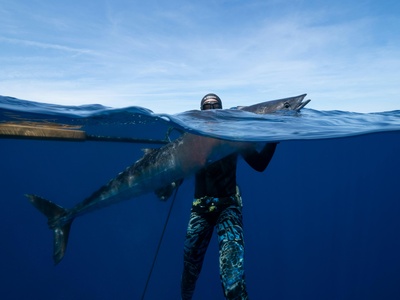
Wahoo
A long, streamlined predator known for its incredible speed, making it a popular game fish. It has a distinctive elongated body with faint blue vertical bands and is prized for its high-quality white flesh.
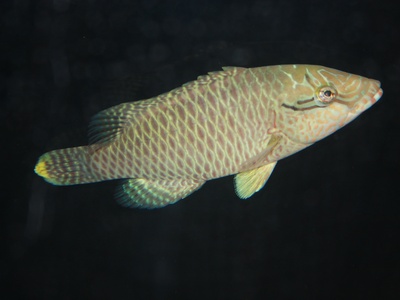
Humphead Wrasse
A massive reef fish, with males developing a prominent hump on their forehead. This curious and long-lived fish is a keystone species, but it is globally threatened by overfishing and is a rare sight.
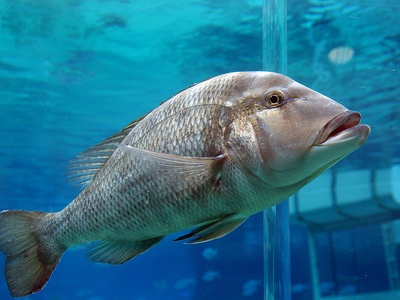
Giant Grouper
One of the largest bony fish found on coral reefs, capable of growing over 2.5 meters long. This massive predator is highly sought after by fishermen and is now rare throughout its range due to over-harvesting.

Clown Triggerfish
A spectacularly patterned triggerfish with large white spots on its lower body and a yellow-reticulated pattern near its face. Its bold coloration serves as a warning to potential predators of its tough skin and sharp spines.

Titan Triggerfish
The largest triggerfish species, known for its aggressive behavior, especially when guarding its nest. Divers are warned to keep their distance, as it will fiercely charge and bite anything it perceives as a threat.

Orange-fin Anemonefish
A type of clownfish with a dark orange-to-black body and two bright white bars. They live in a symbiotic relationship with host anemones, immune to their stings, which provide protection from predators.
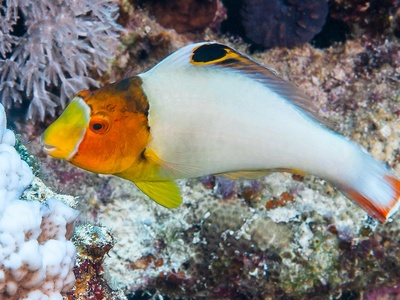
Bicolor Parrotfish
Parrotfish are vital for reef health, as they graze on algae and coral. The Bicolor Parrotfish is particularly striking, with juveniles being white with an orange band and adults being vibrant green and pink.

Powder Blue Surgeonfish
A brilliant blue fish with a yellow dorsal fin and a white face. Like all surgeonfish, it has a sharp, scalpel-like spine at the base of its tail for defense. They often form large schools grazing on algae.
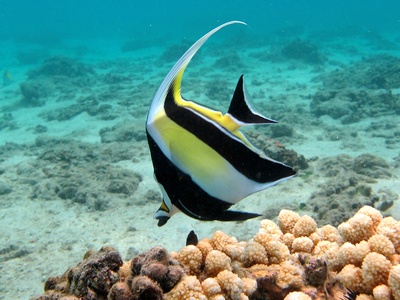
Moorish Idol
An iconic and elegant reef fish with bold black, white, and yellow bands and a long, flowing dorsal fin. Despite its resemblance to butterflyfish, it is the only species in its family.

Giant Moray
The largest of the moray eels by mass, this formidable predator lurks in reef crevices waiting to ambush fish and crustaceans. Divers often only see its large head protruding from its lair.

Bluefin Trevally
A powerful, fast-swimming predator with brilliant electric-blue fins. Often seen hunting in packs, they are a thrilling sight for divers and a prized catch for fishermen due to their strength and taste.
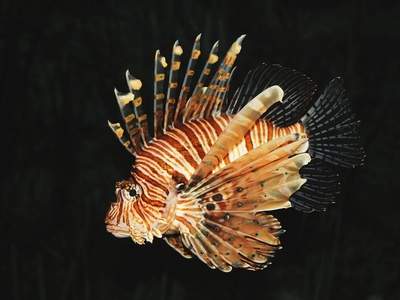
Red Lionfish
An invasive species in some parts of the world, but native to the Pacific. Its dramatic, venomous spines serve as a powerful defense mechanism. It is a slow-moving but effective ambush predator.
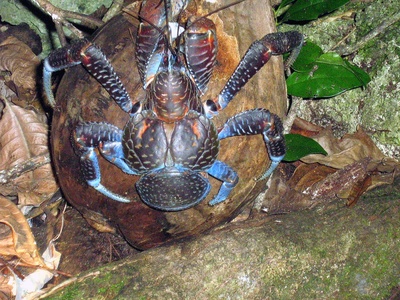
Coconut Crab
The world’s largest land-living arthropod, this giant hermit crab is famous for its powerful claws that can crack open coconuts. It’s a nocturnal scavenger and a protected species in parts of Tuvalu due to overharvesting.

Giant Clam
The largest living bivalve mollusc, it can weigh over 200 kg. Its mantle contains symbiotic algae that provide it with food through photosynthesis, giving it vibrant colors. A key species in reef ecosystems.

Crown-of-thorns Starfish
A large, multi-armed starfish covered in venomous spines. It is a voracious predator of coral polyps. While a natural part of the reef, population outbreaks can cause widespread coral destruction.
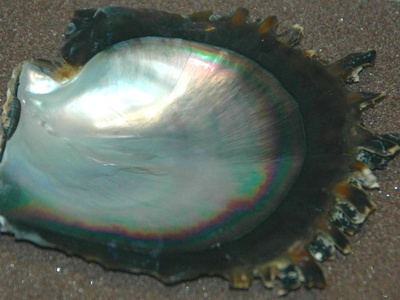
Black-lipped Pearl Oyster
This oyster is the source of black pearls. It was historically important for Tuvalu’s small-scale pearl farming industry. The shells are also used for traditional handicrafts and jewelry.
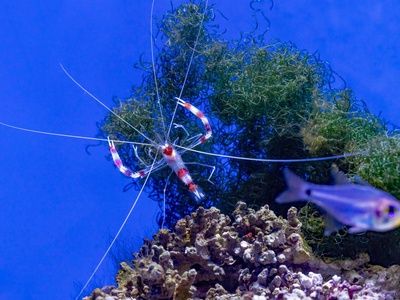
Banded Coral Shrimp
A small, colorful shrimp known for its “cleaning” behavior. It sets up stations on the reef where fish come to have parasites removed. Its long white antennae signal its services to passing fish.
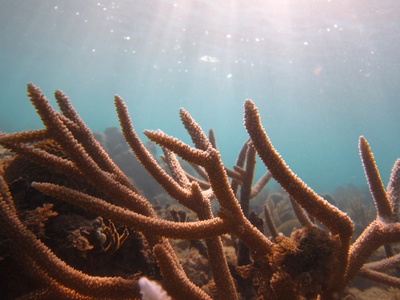
Staghorn Coral
A fast-growing, branching coral that provides critical habitat for countless reef creatures. These corals are particularly vulnerable to bleaching from high sea temperatures, a major threat to Tuvalu’s reefs.
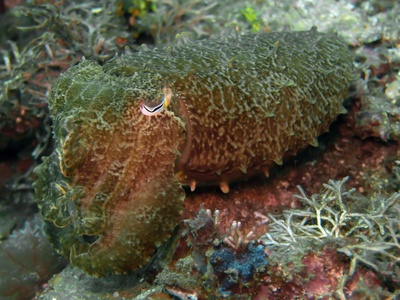
Sea Cucumber (unspecified)
Several species of sea cucumber are harvested in Tuvalu for the ‘bêche-de-mer’ trade. These bottom-dwellers play a vital role in recycling nutrients on the seafloor, acting as the ‘vacuum cleaners’ of the reef.

Christmas Tree Worm
These worms are recognized by their two brightly colored, spiral-shaped crowns that protrude from the coral. Used for feeding and respiration, they retract instantly into their burrow if disturbed.

Ghost Crab
Known for their pale, sand-colored bodies and large eyes on stalks. They are swift runners and scavengers on the beach, darting into their burrows when approached. They help keep the beaches clean.
